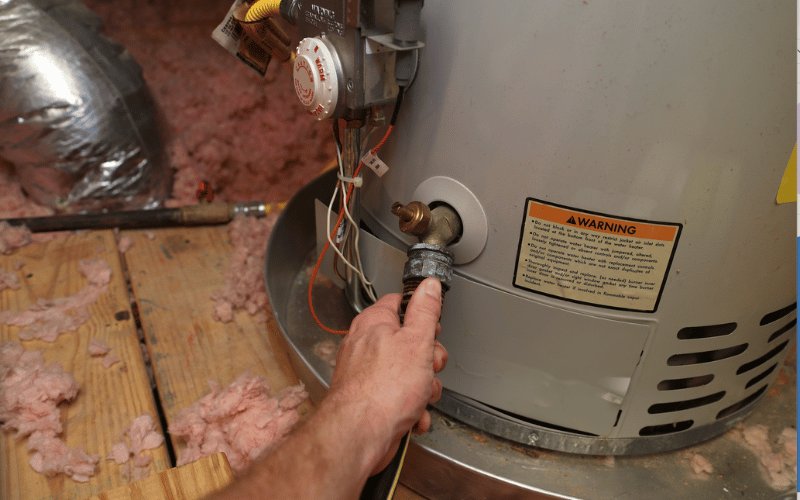Caring for Your Home's Hot Water System: Key Guidelines
Caring for Your Home's Hot Water System: Key Guidelines
Blog Article
They are making several great pointers on Water Heater Maintenance Tips You Can't Afford to Forget as a whole in this content down the page.

Hot water is vital for everyday comfort, whether it's for a rejuvenating shower or washing recipes. To guarantee your warm water system runs effectively and lasts longer, regular maintenance is key. This write-up supplies functional ideas and insights on how to maintain your home's warm water system to prevent disturbances and pricey fixings.
Intro
Preserving your home's warm water system may appear complicated, but with a couple of easy actions, you can guarantee it operates smoothly for many years ahead. This overview covers whatever from recognizing your hot water system to do it yourself maintenance pointers and understanding when to call in professional help.
Value of Keeping Your Hot Water System
Routine maintenance not just extends the lifespan of your warm water system yet also ensures it runs successfully. Neglecting maintenance can cause reduced effectiveness, greater power costs, and even premature failure of the system.
Indications Your Warm Water System Requirements Maintenance
Knowing when your warm water system requires interest can prevent significant problems. Watch out for indicators such as inconsistent water temperature, strange sounds from the heating unit, or rustic water.
Understanding Your Hot Water System
Before diving into upkeep jobs, it's useful to comprehend the standard components of your hot water system. Usually, this includes the water heater itself, pipes, anode poles, and temperature controls.
Month-to-month Maintenance Tasks
Routine monthly checks can assist capture minor issues prior to they intensify.
Flushing the Hot Water Heater
Flushing your hot water heater eliminates debris buildup, boosting effectiveness and extending its life.
Checking and Changing Anode Rods
Anode poles avoid corrosion inside the container. Inspecting and changing them when worn out is crucial.
Evaluating and Changing Temperature Settings
Readjusting the temperature setups makes sure optimal performance and safety and security.
Do It Yourself Tips for Upkeep
You can do a number of maintenance tasks on your own to maintain your warm water system in leading problem.
Checking for Leaks
Routinely inspect pipelines and links for leakages, as these can result in water damage and greater costs.
Checking Pressure Alleviation Valves
Checking the pressure safety valve guarantees it works correctly and prevents extreme pressure accumulation.
Protecting Pipes
Protecting hot water pipes reduces heat loss and can conserve power.
When to Call a Specialist
While do it yourself upkeep is helpful, some problems need expert proficiency.
Facility Problems Needing Professional Help
Instances consist of significant leaks, electrical troubles, or if your hot water heater is constantly underperforming.
Routine Professional Maintenance Conveniences
Specialist maintenance can include thorough examinations, tune-ups, and making sure compliance with safety and security standards.
Verdict
Regular upkeep of your home's hot water system is crucial for effectiveness, long life, and expense financial savings. By following these pointers and knowing when to look for professional assistance, you can ensure a reputable supply of warm water without unexpected interruptions.
How to Maintain an Instant Hot Water Heater
Before tinkering with your hot water heater, make sure that it’s not powered on. You also have to turn off the main circuit breaker and shut off the main gas line to prevent accidents. Also turn off the water valves connected to your unit to prevent water from flowing into and out of the appliance. 2. When you’re done, you have to detach the purge valves’ caps. These look like the letter “T†and are situated on either side of the water valves. Doing so will release any pressure that has accumulated inside the valves while at the same time avoid hot water from shooting out and burning your skin. 3. When the purge valves’ caps are removed, you have to connect your hosing lines to the valves. Your unit should have come with three hoses but if it didn’t, you can purchase these things from any hardware or home repair shops. You can also get them from retail stores that sell water heating systems. Read the user’s manual and follow it to complete this task properly. When the hosing lines are connected, open the purge port’s valves. 4. You should never use harsh chemical cleaners or solutions when cleaning your unit. Make use of white vinegar instead. It should be undiluted and you’ll probably use about 2 gallons. 5. Now flush your water heater. This task should probably take about 40 minutes. We can’t give you specific directions for this because the procedure is carried out depending on the type, model and brand of your heater. With that being said, refer to the user’s manual. 6. When you’re done draining the unit, you have to turn off the purge port valves again. Remove the hosing lines that you earlier installed on each of the water valves. Put the valve caps (purge port) back in their respective places and be very careful so as not to damage the rubber discs that are found inside these caps. 7. Now that everything’s back in place, check your user’s manual again to find out how to reactivate your water heating system. 8. Once it is working, turn one of your hot water faucets on just to let air pass through the heater’s water supply pipes. Leave the tap on until water flows smoothly out of it. https://www.orrplumbing.com/blog/2014/september/how-to-maintain-an-instant-hot-water-heater/

We are very intrigued by What Kind of Maintenance Do Water Heaters Need? and I'm hoping you appreciated the entire blog posting. Sharing is caring. Helping people is fun. I appreciate reading our article about Water Heater Maintenance Tips You Can't Afford to Forget.
Click Here Report this page